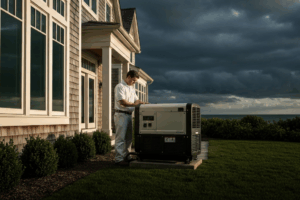When Does Cable Bundling Violate NEC Rules?
Introduction
Proper cable bundling ensures safe, compliant electrical installations, but incorrect practices can lead to significant cable bundling violations of NFPA 70 (NEC) rules, risking hazards like overheating or insulation failure. This guide clarifies when bundling becomes a code violation, focusing on NEC requirements and safety protocols for electricians.
The Ampacity-Bundling Connection
Cable bundling affects ampacity, the maximum current a conductor can carry without exceeding its temperature rating (NEC Table 310.16). Ampacity charts assume a 30°C (86°F) ambient temperature and ≤3 current-carrying conductors. Tight bundling traps heat, reducing ampacity and risking insulation degradation or fires. NEC 310.15(B)(3)(a) mandates de-rating when >3 conductors are bundled, ensuring safe operation.
Avoiding Cable Bundling Violations
Adhering to NEC bundling rules prevents hazards and ensures compliant installations. Understand these key requirements to avoid violations and maintain safety.
When Bundling Becomes a Violation
- Ampacity De-rating: For >3 current-carrying conductors in a raceway or bundle, de-rate ampacity per NEC 310.15(B)(3)(a). Example: 4–6 conductors require 80% ampacity (20% reduction); 10–20 conductors require 50%. For a 20A circuit with 14 AWG copper (25A at 60°C), bundling 10 conductors reduces ampacity to 12.5A, violating code unless upsized.
- Conduit Fill Limits: Do not exceed fill percentages in NEC Chapter 9, Tables 1 and 4. Overfilling conduits traps heat, risking overheating (NEC 300.17).
- Physical Damage: Overtightening ties can damage insulation, causing short circuits or ground faults. NEC 300.4 requires protection against physical damage.
Safety Protocols
- De-energize: Verify circuits are off with voltage testers; use lock-out/tag-out (LOTO) (NFPA 70E 120.2, 120.5).
- Proper Tools: Use flush-cut snippers and avoid overtightening; a finger should fit under ties to prevent insulation damage (NEC 300.4).
- Accessibility: Ensure bundling does not block access to junction boxes or receptacles (NEC 314.29, Article 100).
Conclusion
Correct cable bundling must comply with NFPA 70 to avoid hazards. By applying de-rating rules (NEC 310.15(B)(3)(a)), respecting conduit fill limits, and prioritizing safety per NFPA 70E, electricians ensure safe, compliant installations that protect users and equipment. For more information on electrical codes, visit the official NFPA website.
Take the next step in your professional growth! Visit Expert CE (https://expertce.com/) for all your continuing education needs.
Continuing Education by State
Select your state to view board-approved continuing education courses and requirements:
Disclaimer: The information provided in this educational content has been prepared with care to reflect current regulatory requirements for continuing education. However, licensing rules and regulations can vary by state and are subject to change. While we strive for accuracy, ExpertCE cannot guarantee that all details are complete or up to date at the time of reading. For the most current and authoritative information, always refer directly to your state’s official licensing board or regulatory agency.



